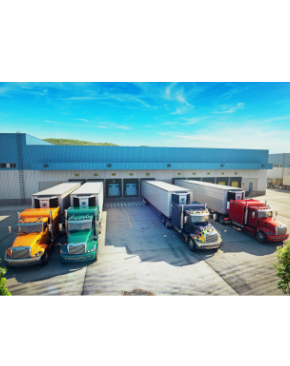Uncover 5 major trends currently influencing pharmaceutical supply chains and what they mean for pharma organizations
Resilience
A resilient supply chain is defined by its capacity for resistance and recovery. Covid-19 has tested every company’s supply chain, but few are more vital than the pharmaceutical supply chain. With weak continuity planning and single-source suppliers, many pharmaceutical companies are at a standstill trying to find ways to work with suppliers to increase their factory’s output. To continue serving patients, supply chain resiliency is necessary. Consortiums like the Healthcare Industry Resilience Collaborative (HIRC), which is a resiliency initiative led by Spectrum Health, Mayo Clinic, and many other health systems and suppliers, who are discussing the impact of supply chain interruptions on patient care. Initiatives like this that are working to define key performance indicators for resiliency are needed so manufacturers can gain an understanding of where they are and start improving their resiliency to continue serving their patients with the optimal level of care.
Looming government interest
With the pandemic calling global attention to the pharmaceutical industry and demonstrating the importance of the supply chain, it is no surprise the US government is more focused on ways to improve supply chain resilience to reduce the impact on consumers after learning of Covid-19. While there are proposals in Congress to reduce drug pricing to make medicines more affordable to Americans, large companies foresee spending less on research which means fewer explorations into lesser-known diseases. The risk for smaller companies under drug pricing pressures is that they do not have the revenues to withstand price reductions and this will reduce the number of small and innovative companies. In addition to drug pricing, there was an executive order released on US supply chains that comments on the need to rebuild domestic manufacturing capacity. In August 2019, 72 percent of US active pharmaceutical ingredients (APIs) were manufactured overseas, with 18 percent coming from India and 13 percent from China. As this dependence on foreign materials was realized, consumers began taking notice of the nearly 100 container ships waiting to enter the port of Long Beach, California in the week of October 18. Typically, the wait is seventeen ships. The US government has taken action and increased involvement in the pharmaceutical industry and only time will tell if interest wanes as supply chains return to normal or if it will remain to prevent future disruptions. In the meantime, some manufacturers are looking at what it would take to have more manufacturing facilities within the US or ‘nearshoring’ closer to it.
The last quarter mile
The need for speed due to the ‘Amazon effect’ combined with the need for a fast Covid-19 vaccination roll out changed the pharmaceutical landscape and the traditional delivery points in the final mile. In the past, most cold chain medicines were being delivered directly to hospitals or pharmacies with small instances of home delivery for drugs like insulin. With the Covid-19 vaccine, there was a greater need to meet patients wherever they were, such as at work, a community center, or in some cases their home. The last quarter mile of delivery became more hyper-focused than ever before. During the pandemic, e-commerce was also increasing and the need for faster deliveries of pharmaceutical and consumer goods resulted in a need for more urban warehousing, but the last mile infrastructure was not built to withstand the limits as they were. Many large players in the final mile are making investments to offset their distance from major cities. For example, Amazon is opening its first large warehouse in New York City in an 855,000 square foot, $100 mn facility. For all industries, the focus on urban warehousing to support the last quarter mile will continue to grow as it has this year.
End-to-end data traceability
The constant hunger for data is not new to the pharmaceutical industry, but over the last year, many have begun leveraging master data and artificial intelligence to overcome the challenges that arose from the pandemic. Access to data enables supply chain experts to make proactive decisions that can save medicines to make deliveries to the patient on time. Data from hospitals on their medicine usage rates can enable manufactures to build forecast models to better predict the need and necessary ingredient volumes rather than ones based on historic data. With the various opportunities that come from data, there is a great need for data scientists within pharmaceutical manufacturers, but more so within the supply chain groups rather than these data scientists sitting in centers of excellence. This year has demonstrated the ability of data to improve forecasting, drive out costs, and proactively support patients. Having more data scientists supporting the supply chain from within will result in improved efficiencies.
Strategic partnerships
A lesson formed out of the pandemic was that it brought together all stakeholders along the pharmaceutical supply chain. Pharmaceutical manufacturers were working with API manufacturers to brainstorm ways to increase output while manufacturers were working with hospitals to understand their need, to make sure they were getting medicines to exactly where it was needed to avoid stockouts. In the pharmaceutical industry, partnerships can take decades to forge due to the proprietary nature of business and sensitive patient information that stakeholders manage. In the past, the need to protect patient data or hide weaknesses from customers has resulted in distance growing between manufacturers and logistics providers or hospitals. During the pandemic, the industry was brought together by the need to solve a specific problem and it quickly created a level of trust that still resonates today. When each stakeholder can share data or limitations with others, it demonstrates true partnership and how to use resources or strengthen weaknesses to truly focus on the best way to serve the patient.
Thermo King® takes great pride in its innovations that created the refrigerated trailer industry over 80 years ago and its mechanical and electric refrigerated technologies that span all modes of transportation from air to land to sea. Working with partners to innovate and overcome logistics challenges to better serve the patient is a passion for Thermo King. If your company is seeking an innovative partner to help solve pharma-related challenges, learn more about Thermo King’s pharma solutions below.




